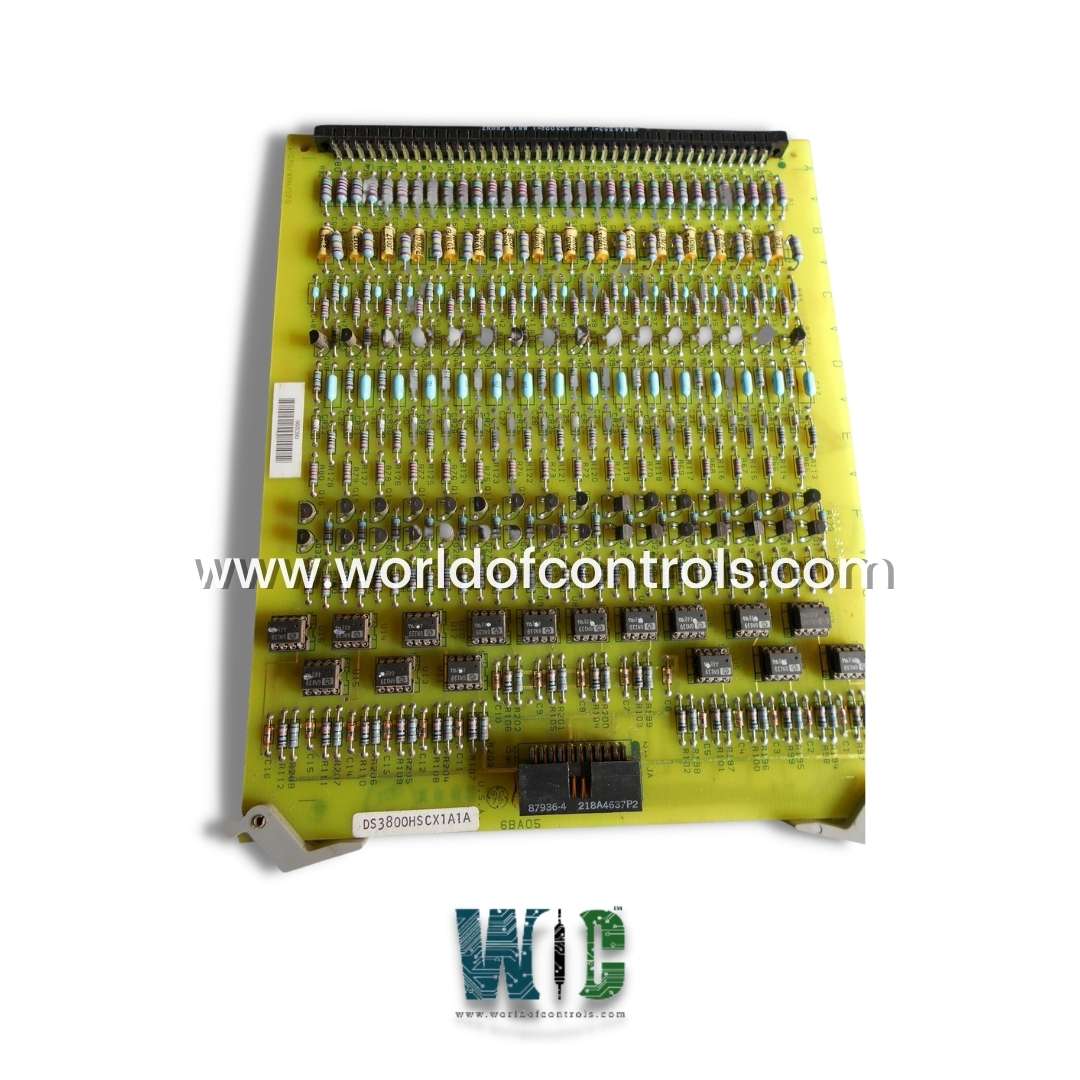
World Of Controls understands the criticality of your requirement and works towards reducing the lead time as much as possible.
DS3800HSCX - High Level Non-Isolated Input Board is available in stock which ships the same day.
DS3800HSCX - High Level Non-Isolated Input Board comes in UNUSED as well as REBUILT condition.
To avail our best deals for DS3800HSCX - High Level Non-Isolated Input Board, contact us and we will get back to you within 24 hours.
SPECIFICATIONS:
Part Number: DS3800HSCX
Manufacturer: General Electric
Series: Mark IV
Product Type: High-Level Non-Isolated Input Board
Number of channels: 12
Operating temperature: -30 to 55 degrees Celsius
Size: 8.25 cm high x 4.18 cm
Repair: 3-7 Day
Availability: In Stock
Weight: 2 lbs
Country of Origin: United States
FUNCTIONAL DESCRIPTION:
DS3800HSCX is a High-Level Non-Isolated Input Board manufactured and designed by General Electric as part of the Mark IV Series used in GE Speedtronic Gas Turbine Control Systems. A High-Level Non-Isolated Input Board is a component commonly used in various electrical and electronic systems. Unlike isolated input boards that provide electrical isolation between the input and the rest of the system, high-level non-isolated input boards typically handle signals without isolation. Here are some key features and components you might find in a High-Level Non-Isolated Input Board:
Input Connectors: These connectors allow for the physical connection of external signals or sensors to the board. The type of connectors used can vary depending on the specific application, such as terminal blocks, BNC connectors, or others.
Signal Conditioning: Non-isolated input boards may include signal conditioning circuitry to process and adapt incoming signals to the desired levels or formats for further processing by the system. This might include amplification, filtering, or voltage level shifting.
Input Channels: Specify the number of input channels available on the board. Each channel can handle one input signal.
Compatibility: Indicate the type of signals or sensors that the board is compatible with, such as analog voltage, current, or digital signals.
Voltage/Current Ranges: Provide information about the acceptable voltage or current ranges that the input board can handle. This helps users ensure they stay within the board's operational limits.
Resolution: Specify the resolution of the analog-to-digital converters (ADCs) if the board is used for analog input. This refers to the level of detail the board can capture.
Sample Rate: If applicable, note the maximum sample rate for analog signals. This is crucial for applications that require high-speed data acquisition.
Compatibility with Software: Mention any software or programming languages that are compatible with the input board, as many such boards require specialized software for configuration and data acquisition.
Mounting Options: Describe how the board can be physically mounted or integrated into a larger system. This might include DIN rail mounting, rack mounting, or standalone enclosures.
Power Requirements: Specify the power supply voltage and current requirements for the input board. Ensure that users provide the necessary power for the board to operate correctly.
WOC maintains the largest inventory of Replacement parts for GE Speedtronic control systems. Additionally, we offer warranty-backed unused and rebuilt boards as well as board repairs for your damaged ones. For your OEM needs, our team of professionals is available around the clock. We at WOC are happy to help you with any needs you may have in terms of automation. Please contact our team by phone or email for pricing and availability on any components and repairs.
What is a high-level non-isolated input board?
A high-level non-isolated input board is a circuit board designed to accept and process signals or data from external sources that are not isolated from the system it connects to. These boards are often used in electronics and industrial applications.
What are the common applications of high-level non-isolated input boards?
They are used in a variety of applications, including data acquisition, sensor interfacing, monitoring, control systems, and automation.
What is the difference between high-level and low-level input boards?
High-level input boards are designed to handle signals with a higher voltage or current level, whereas low-level input boards are for weaker signals that require amplification or conditioning before processing.